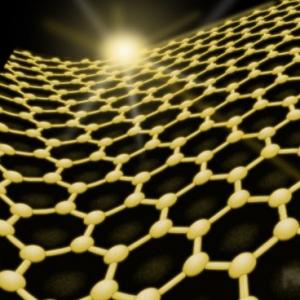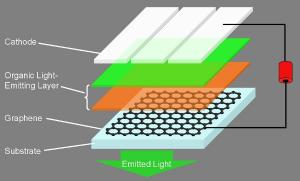MIT researchers use graphene as an electrode for organic solar cells
Researchers from MIT developed a new way to use Graphene as an electrode for organic solar cells. The biggest problem with using Graphene in such a device was getting the material to adhere to the panel. Graphene repels water, so typical procedures for producing an electrode on the surface by depositing the material from a solution won’t work.

The team tried a variety of approaches to alter the surface properties of the cell or to use solutions other than water to deposit the carbon on the surface, and they found that doping the surface â that is, introducing a set of impurities into the surface â changed the way it behaved, and allowed the graphene to bond tightly. As a bonus, it turned out the doping also improved the material’s electrical conductivity.

